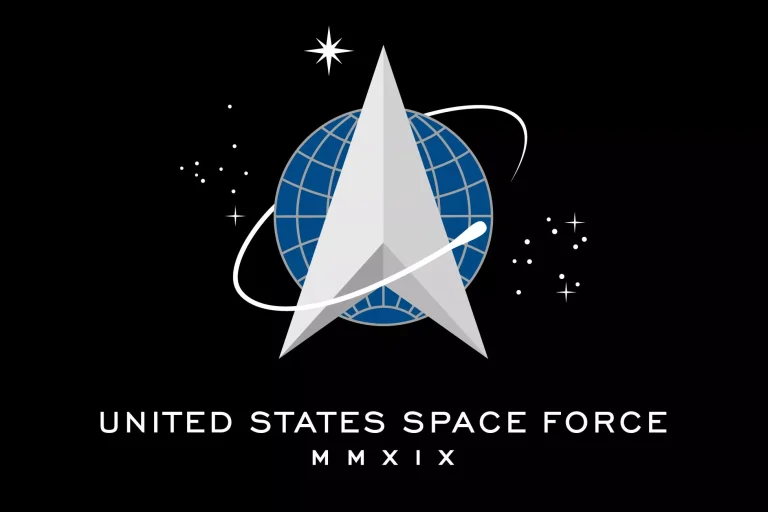How the U.S. Space Force Safeguards America’s Satellites
The U.S. Space Force (USSF) is the newest branch of the U.S. military, created in 2019 to protect American interests in space. It tracks satellites and debris, secures vital communications like GPS, defends against hostile actions using electronic and cyber tools, and develops future space defense technologies—all while working alongside civilian agencies such as NASA.
Summary
- The USSF launched as a separate service in 2019
- It safeguards U.S. satellites and other space assets
- Teams monitor orbiting objects to prevent collisions
- It runs and protects the GPS navigation system
- Military communications rely on its satellite fleets
- Defensive operations “blind and deafen” enemy satellites
- Cyber units target threats to space systems on Earth
- It shares tracking data with global partners
- Budget has grown past NASA’s, fueling new projects
- It avoids physical attacks that would create dangerous debris
- Collaboration with NASA boosts both science and security
- Training covers orbital mechanics and cyber warfare
- Future plans include on-orbit servicing and advanced sensors
- It faces challenges like space debris and unclear laws
- Its motto is “Semper Supra”—Always Above

The Origins of the Space Force
In December 2019, the U.S. stood up the Space Force as its sixth military branch. Leaders saw space as a critical domain for both security and national power. Before that, the Air Force managed space duties. Congress passed the Space Force act to make domain awareness and defense its sole mission (About Us).
Mission and Responsibilities
The USSF has four main roles. It operates military and navigation satellites. It tracks objects in orbit, like debris and other nations’ spacecraft. It secures critical communications channels. And it innovates new defenses, including cyber and electronic tools. Together, these keep U.S. systems running and safe.
Tracking Space Objects
Space Force teams use ground stations and space sensors to watch more than 27,000 objects in Earth orbit. They share data with the Joint Space Operations Center to predict and prevent collisions. This work protects active satellites and helps astronauts stay safe on missions.
Communications and Navigation
USSF manages satellite networks that carry military calls, data links, and missile warnings. It also keeps the GPS constellation healthy. Everyday devices—cars, planes, and phones—depend on those signals. Teams replace old satellites and fix jamming attempts so services stay reliable.
Space Operations: Defense and Offense
Space can be a silent battlefield. Instead of shooting at satellites, the Space Force uses electronic warfare to blind or deafen hostile systems. Cyber units on Earth target networks controlling enemy spacecraft. All tactics stay classified to protect U.S. methods and assets.
“There are a few different ways the Space Force carries out its mission,” said Space Insider. “One is simply watching and waiting, using both ground- and space-based systems to track objects in orbit.”
— Space Insider
Organization and Teams
The Space Force includes field commands focused on operations, systems, training, and acquisition. Each command has experts in satellites, cyber, and engineering who work together to meet mission goals.
| Command Name | Mission Focus |
|---|---|
| Space Operations Command | Satellite control and domain awareness |
| Space Systems Command | R&D, acquisition, and launch support |
| Space Training Command | Education in orbital mechanics, cyber |
| Space Acquisition | Building and testing new spacecraft |
Training and Personnel
The USSF draws talent from the Air Force, Army, and civilian experts. Recruits learn at special schools—some at the Space Systems Command—covering orbital physics, satellite ops, and cyber warfare. Regular exercises simulate satellite threats and debris tracking so teams can respond fast and smart.
Budget and Growth
Since its creation, the Space Force budget has steadily risen—surpassing NASA’s alone some years—to fund satellites, ground stations, and research labs.
| Year | USSF Budget (USD) | NASA Budget (USD) |
|---|---|---|
| 2019 | 15 billion | 22.6 billion |
| 2020 | 18 billion | 23 billion |
| 2021 | 21 billion | 24 billion |
| 2022 | 24 billion | 25 billion |
| 2023 | 26 billion | 25.5 billion |
Collaboration with NASA
Though NASA focuses on science—like the Perseverance rover’s Mars mission—the agencies share tech and data. NASA builds rockets for exploration, while the Space Force adapts similar systems for defense. Working together saves money and boosts safety in space (NASA, Perseverance Rover).
Future Plans
Looking ahead, USSF will field new satellites with advanced sensors and test on-orbit servicing to fix or refuel aging spacecraft. It plans laser-based communications for faster data. Partnerships with allies through the Combined Space Operations Center aim to share tracking data. New units will watch space weather to guard against solar storms.
Challenges Ahead
Space is crowded, and debris grows every year. The Space Force must find better ways to clear and track junk. International laws for space conflict remain vague. Tech must evolve quickly to meet fast-moving threats in orbit.
Facts
- The Space Force’s logo is the Delta, Globe, and Star motif.
- Its motto, “Semper Supra,” means “Always Above.”
- General John W. Raymond is its first Chief of Space Operations.
- The Space Medal rewards exceptional service.
- Uniforms feature unique grey digital patterns.

